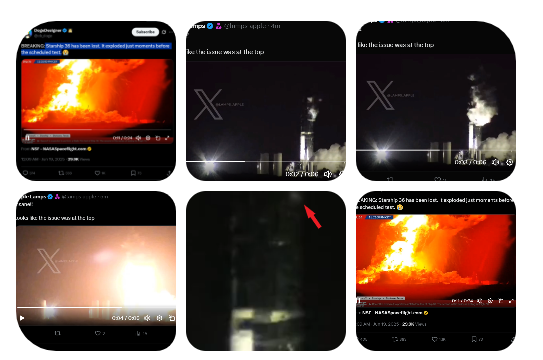QuantaDose Press Releases
BREAKING: SpaceX Starship 36 Explodes Moments Before Scheduled Test
 In a dramatic and fiery event at SpaceX’s Massey Outpost near Starbase, Texas, Starship 36 experienced a catastrophic explosion just moments before a planned static-fire test. This unexpected event occurred late at night, sending flames soaring into the sky and turning the test stand into an inferno visible for miles.
In a dramatic and fiery event at SpaceX’s Massey Outpost near Starbase, Texas, Starship 36 experienced a catastrophic explosion just moments before a planned static-fire test. This unexpected event occurred late at night, sending flames soaring into the sky and turning the test stand into an inferno visible for miles.
Eyewitnesses and social media footage captured the terrifying sequence, initially spotting what appeared to be an unusual venting plume from the upper region of the spacecraft. Within seconds, a bright white flash emerged at the top of Starship 36, immediately followed by a cascading eruption that engulfed the rocket in a massive fireball.
The explosion created a blaze intense enough to illuminate the surrounding area like daylight. Dramatic images reveal immense clouds of fire and smoke, with secondary blasts triggered by residual propellant, underscoring the immense power and volatility of the liquid methane and oxygen fueling Starship rockets.
Early analysis of footage indicates the incident began near the forward methane header tank, an area where SpaceX had previously implemented design modifications to enhance autogenous pressurization systems. Observers noted a pinpoint source of ignition clearly visible before the large-scale detonation occurred, suggesting a potential leak or rupture within the tank’s plumbing.
Fortunately, the rigorous safety protocols SpaceX has in place meant that no injuries were reported, as personnel were safely distant from the test stand during the fueling process. However, the Massey Outpost testing facility itself sustained significant damage. Observations after the explosion show extensive charring and structural deformation to the support stands and adjacent equipment.
This explosion, despite occurring under partial fueling conditions estimated to be around 10-15% of Starship’s total capacity, still generated a shockingly large blast. Experts indicate the amount of methane involved would equate to roughly half a kiloton of TNT, comparable to a substantial conventional explosion. Such magnitude highlights the extreme care and safety measures necessary in handling these powerful spacecraft.
This incident marks a setback for SpaceX’s aggressive testing schedule. Starship 36 had been earmarked for the highly anticipated Flight 10 mission, part of a series designed to refine technology essential for missions to Mars and commercial satellite launches. With Ship 36 now completely destroyed, SpaceX will likely shift focus swiftly to Ship 37 or 38, potentially causing several months of delay.
The explosion at Massey also prompts a necessary period of investigation and infrastructure recovery. Regulatory oversight by the FAA is standard practice following such events, though major repercussions are not anticipated given the remote test location and adherence to safety protocols. Nonetheless, increased scrutiny from public and environmental groups is expected, possibly influencing how SpaceX conducts future ground operations.
In the broader context, this failure follows other recent anomalies involving Starship prototypes, highlighting the challenges and risks inherent in developing the next generation of spacecraft designed for unprecedented payloads and reusability.
As engineers sift through telemetry data and high-speed camera footage to pinpoint the exact failure mechanisms, the lessons learned from Ship 36 will undoubtedly inform crucial design refinements. Such rapid iteration and adaptation have consistently defined SpaceX’s testing philosophy, turning setbacks into valuable insights that eventually enhance spacecraft reliability and safety.
Stay tuned for further updates as more detailed information becomes available from SpaceX and regulatory authorities. Despite the setback, the ambitious goal of enabling humanity’s expansion into space continues to drive forward at SpaceX, each challenge bringing the dream of deep-space exploration closer to reality.
